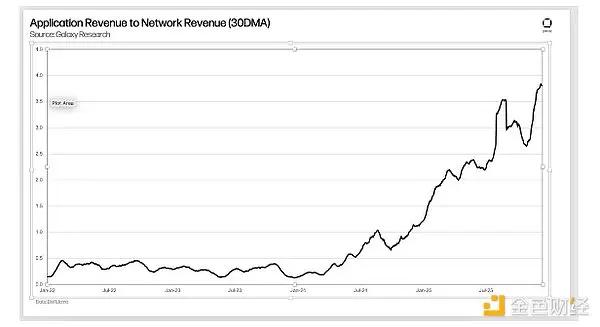The Deep Game Behind the Fed's March Interest Rate Decision
In the early hours of March 20th, Beijing time, the Federal Reserve voted 11:1 to maintain the federal funds rate in the range of 4.25%-4.50%, while announcing that the monthly cap on the reduction of US Treasuries will be lowered from $25 billion to $5 billion starting April 1. This seemingly mild "technical adjustment" actually implies a deep-seated logic of restructuring global capital market liquidity.
The "Dual-Track" Signal of Policy Shift
Although the dot plot maintained the median expectation of two rate cuts (a total of 50 basis points) in 2025, the divergence among officials has expanded significantly:
- The rise of hawkish forces: the number of officials expecting no rate cuts increased from 1 to 4, and the number of those supporting only one rate cut has doubled;
- The liquidity offset of slowing the balance sheet reduction: the slower pace of QT will release about $300 billion per year of base money, equivalent to an implicit QE.
This combination of "tightening rates + loosening balance sheet reduction" reflects the Fed's difficult balancing act between inflation persistence (core PCE revised up to 2.8%) and recession risk (2025 GDP growth forecast revised down 0.4%). Powell acknowledged that "tariffs may delay the achievement of the inflation target", hinting that policymakers are preparing for a "stagflationary recession".
The "Expectation Gap" Game in Market Pricing
The CME FedWatch tool shows that traders have pushed the probability of a rate cut in June from 57% to 62.1%, while the probability of no change in May remains as high as 79.5%. This divergence reflects two narratives:
- The dovish narrative: the slowdown of QT has effectively increased the liquidity of the financial system, providing a floor for risk assets;
- The hawkish narrative: core inflation is still 50% above the target, and rate cuts need to wait for Q2 economic data verification.
This expectation gap will lead the market to exhibit "high volatility, low directionality" in the next three months, providing "event-driven" opportunities for the Altcoin market.
The Cycle Law of Altcoins: From Liquidity Transmission to Market Structure Transformation

As Ethereum breaks through $2,000, the market needs to be clear-eyed: the price breakthrough of a single asset ≠ the start of an Altcoin season. Historical data shows that the Altcoin season requires the synchronization of three conditions:
- Clear expectation of macroeconomic liquidity easing (such as the Fed's unlimited QE in March 2020);
- Bitcoin market cap ratio falls below 40% (capital spills out of the "digital gold");
- Innovative narratives ignite long-tail demand (such as the DeFi Summer and NFT wave in 2021).
The "Liquidity Stratification" of the Current Market Structure
- The "suction effect" of Bitcoin: spot ETF inflows continue (BlackRock raised $224 million in a single day), driving the BTC market cap ratio back to 62%;
- The "sandwich dilemma" of Ethereum: L2 networks (such as the Base chain) divert 30% of on-chain activity, leading to a 60% drop in gas revenue and weakening its value capture ability;
- The "liquidity desert" of long-tail assets: the TVL of public chains like Solana and Avalanche has shrunk 45% year-over-year, and the trading volume of Meme coins is concentrated in the hands of CEX market makers.
In this structure, capital is more inclined to engage in "safety speculation" in large-cap assets like BTC and ETH, rather than taking risks on small and medium-cap tokens.
The "Critical Point Simulation" of the Altcoin Season Kickoff
Based on the Fed's policy path and crypto market data modeling, two scenarios may emerge:
- Scenario 1 (Baseline Scenario): Rate cuts start in June, with $1.2 trillion in liquidity released throughout the year
- Transmission Path: US bond yields fall → risk appetite rebounds → BTC breaks $100,000 → ETH/BTC ratio rebounds → Altcoins catch up
- Time Window: The collective pulse of Altcoins may appear by the end of Q3, but the sustainability depends on Ethereum ecosystem innovations (such as account abstraction, L3 protocols)
- Scenario 2 (Black Swan Scenario): Inflation rebounds, forcing the Fed to restart rate hikes
- Market Impact: Altcoin market cap could plummet 30% in a single day, and ETH may retest the $1,700 support
- Survivor Logic: RWA, Depin and other cash flow-clear tracks may become the preferred safe-haven choices
Ethereum's "Breakthrough Code": From the L2 Revolution to Monetary Policy Coupling
Ethereum's latest breakthrough to $2,000 is essentially the synchronization of "Fed policy dividends + technical oversold rebound", rather than a qualitative change in the ecosystem fundamentals. Whether it can lead the Altcoin season depends on three key variables:
Monetary Policy Transmission Efficiency
- Increased positive correlation: the 90-day correlation coefficient between ETH and the S&P 500 has risen to 0.82, reflecting its strengthened "risk asset" attribute;
- Interest rate sensitivity test: if the 10-year US Treasury yield falls by 50bps, ETH could see a 15%-20% premium.
Ecosystem Value Capture Mechanism
- The value paradox of L2: the Base chain's daily transaction volume has exceeded 1 million, but the transaction fees are captured by Coinbase rather than the Ethereum Foundation;
- Staking economy reform: the Pectra upgrade will raise the staking cap to 20 million ETH, with the annualized yield potentially compressed to 3.5%, weakening the institutional allocation incentive.
Regulatory Policy Game
- The ETF approval deadlock: the Grayscale ETHE trust premium has fallen to -28%, reflecting the market's pessimism about the SEC's approval of a spot ETF;
- The securities attribute dispute: if the SEC brings L2 tokens under regulation, it may trigger a large-scale withdrawal of ecosystem projects from the US.
Epilogue: Seeking the Holy Grail Between Ice and Fire
The Altcoin season of 2025 will be unlike any previous frenzy, destined to be a "game for the carefully selected". As the Fed uses "dovish rhetoric" to soothe the market and "hawkish measures" to curb inflation, investors need to find the "golden intersection" that can both withstand macroeconomic volatility and capture innovation dividends, between the expectation gap in liquidity and the fault line of technological revolution.
Ethereum's breakthrough to $2,000 may just be the prelude, and the real symphony will unfold in the multiple variations of rate cut expectations and narratives like AI, Depin, and L2. The only certainty is that in this era co-written by central bank policies and codes, only those who are proficient in both the language of monetary cycles and on-chain primitives can pluck their own stars in the galaxy of Altcoins.







